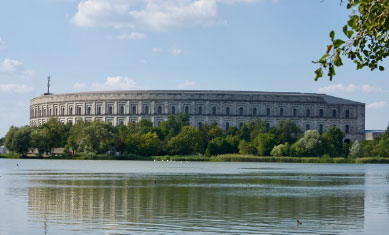HAU33025/26 Architecture and Politics in Twentieth Century Europe

Political leaders use architecture to convey power, to express political ideas, and to influence how people think and act. In twentieth-century Europe, political ideologies including fascism, communism, colonialism, and democracy influenced the creation of new buildings and cities. We will explore those ideologies through the spaces that they produced, and a selection of examples spanning between Hitler’s plans to transform Berlin to public swimming pools in post-war Britain. Under the banner of democracy, we will also explore how forces within Irish politics impacted the Dublin cityscape. This is a history of modern Europe told through the mark left by political actors upon architecture and cities.
- Module Organiser:
- Dr Hannah Malone
- Duration:
- Semester 2
- Contact Hours:
- HAU33025: 2 Lectures per week, 1 seminar per fortnight
- HAU33026: 1 lecture per week, 1 seminar per fortnight
- Weighting:
- HAU33025: 10 ECTS
- HAU33036: 5 ECTS
- Assessment:
- HAU33025: Essay, project and visual analysis exercise
- HAU33026: Essay and visual analysis
- Course open to:
[M=mandatory; O= optional] : Single Honors (O), Joint Honors (O), Art History as a minor (O), visiting (O).
Learning Outcomes:
On successful completion of the module students should be able:
- Identify and analyse the architecture built by major political regimes of twentieth-century Europe.
- Identify and explain the political, ideological, and cultural basis of buildings and urban spaces produced by Fascist, Nazi, Soviet and democratic states.
- Outline the national and transnational contexts in which architecture was created and received in twentieth-century Europe.
- Engage critically with historical, political, and theoretical texts relevant to architecture and urban design during this period.
- Demonstrate original, self-directed historical and theoretical research on twentieth-century European architecture.

